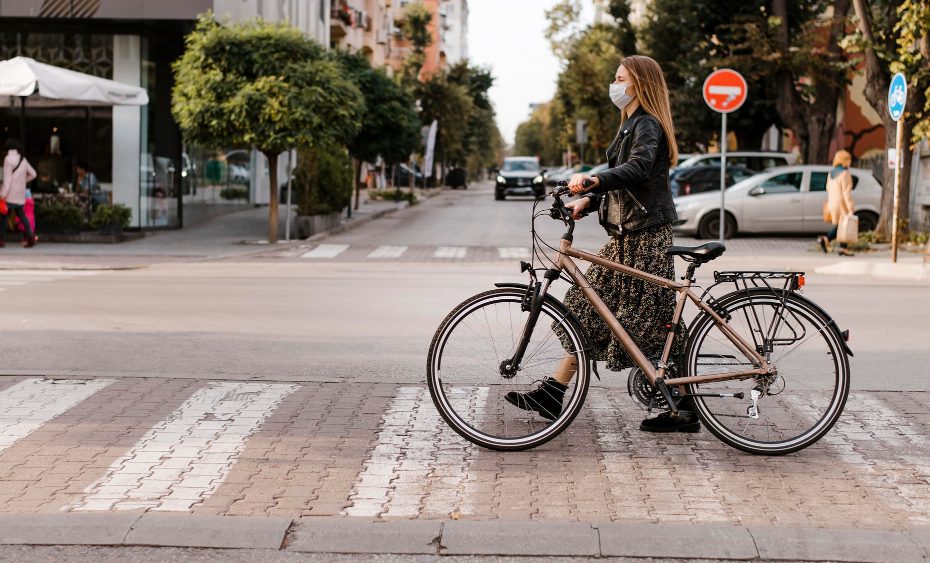What are the risks of road cycling?
Road cycling is a popular and thrilling outdoor activity enjoyed by many people in the UK. It offers numerous health benefits such as improved cardiovascular fitness, muscle strength, and mental well-being. However, it is important to recognize that road cycling also comes with its fair share of risks. Being aware of these risks and taking necessary precautions can help cyclists stay safe on the roads.
1. Traffic Accidents
One of the most significant risks of road cycling is the potential for traffic accidents. Cyclists are vulnerable road users, and sharing the road with larger vehicles can be dangerous. The lack of protective barriers and exposure to fast-moving traffic increases the risk of collisions and serious injuries. According to statistics, a significant number of cycling accidents involve motor vehicles.
To mitigate this risk, it is crucial for cyclists to follow traffic rules, wear high-visibility clothing, and use designated cycling lanes whenever possible. Additionally, keeping an eye on other road users, using hand signals, and being predictable in your movements can help increase your safety on the roads.
“When you ride fast, it’s like playing roulette with your fingers crossed.” – Paul Fournel
2. Road Infrastructure
The condition of road infrastructure can pose a risk to road cyclists. Uneven surfaces, potholes, debris, and inadequate bike lanes can all contribute to accidents. Poorly maintained roads increase the chances of a cyclist losing control and falling off their bike. Additionally, road hazards such as wet leaves, sand, or oil spills can make surfaces slippery and further increase the risk of accidents.
Cyclists should pay close attention to the road surface and be prepared to adjust their speed or route accordingly. Reporting hazardous road conditions to local authorities can also help improve safety for all road users.
3. Weather Conditions
Unpredictable weather conditions in the UK can pose additional risks to road cyclists. Rain, fog, snow, and strong winds can affect visibility, road grip, and overall cycling conditions. Wet roads, in particular, can significantly increase braking distances and make it harder to maintain control of the bike.
Cyclists should check weather forecasts before heading out for a ride and consider postponing their cycling plans if conditions are hazardous. Investing in suitable cycling gear such as waterproof clothing, helmet covers, and appropriate lighting can help improve safety during adverse weather.
4. Physical Exertion and Fatigue
Road cycling often involves long distances and strenuous physical exertion. Pushing beyond personal limits without proper training and preparation can lead to fatigue, reduced concentration, and slower reaction times. These factors can increase the risk of accidents on the road.
It is vital for cyclists to gradually build up their fitness levels, stay well-hydrated, and take regular breaks during longer rides. Listening to your body and recognizing signs of fatigue can help prevent accidents caused by diminished physical performance.
5. Interaction with Pedestrians
In urban areas or shared spaces, road cyclists often encounter pedestrians. Cyclists moving at high speeds or not giving enough space to pedestrians can lead to collisions or injuries. Respectful and considerate behavior towards pedestrians is essential for creating a safer environment for all.
Cyclists should always yield to pedestrians, reduce speed in congested areas, and give clear signals when passing. Sharing the road responsibly with other road users is crucial in minimizing the risks associated with cycling.
In conclusion, while road cycling offers numerous benefits, it is important to acknowledge and address the associated risks. By being aware of traffic accidents, road infrastructure, weather conditions, physical exertion, and interactions with pedestrians, cyclists can take steps to minimize these risks and enjoy safer rides. Remember, safety should always be a top priority for every road cyclist.
Why are cyclists vulnerable?
1. Lack of protection
Cyclists are significantly more vulnerable on the road compared to motorists due to the lack of physical protection. While drivers have the safety of their vehicles, cyclists are exposed and can easily sustain serious injuries in the event of a collision.
2. Size and visibility
Another reason why cyclists are vulnerable is their smaller size and reduced visibility on the road. Compared to cars or trucks, bicycles are much less noticeable, especially in busy traffic or adverse weather conditions. This makes it easier for other road users to overlook or underestimate their presence.
3. Limited maneuverability
Cyclists have limited maneuverability compared to motorized vehicles, which puts them at a higher risk. They are often confined to narrow bike lanes or forced to share the road with larger vehicles. This lack of flexibility can make it difficult for cyclists to react quickly to sudden changes in traffic or avoid potential hazards.
4. Lack of infrastructure
The absence of dedicated cycling infrastructure also contributes to the vulnerability of cyclists. Many roads do not have separate bike lanes or safe cycling paths, forcing cyclists to share space with fast-moving vehicles. This increases the chances of accidents and collisions, particularly at intersections or junctions.
5. Negligent driving behavior
Reckless driving behaviors, such as speeding, distracted driving, or failure to yield, pose a significant risk to cyclists. Even a minor mistake or negligence by a motorist can lead to severe consequences for a cyclist. It is crucial for drivers to be aware of their surroundings and respect the rights of cyclists on the road.
6. Lack of awareness and education
Many drivers have limited awareness and understanding of how to safely interact with cyclists on the road. The lack of education regarding cycling laws and proper sharing of the road can lead to dangerous situations, further increasing the vulnerability of cyclists.
7. Uneven road conditions
Poorly maintained roads or uneven surfaces can pose significant risks to cyclists. Potholes, loose gravel, or debris can cause a cyclist to lose control, leading to serious accidents and injuries. Local councils and authorities need to ensure that road surfaces are properly maintained to minimize these hazards.
8. Aggressive behavior from motorists
Sometimes, cyclists face hostility or aggression from certain motorists who fail to acknowledge their rights on the road. Verbal abuse, aggressive overtaking, or deliberate attempts to intimidate cyclists can make them feel vulnerable and deter them from cycling altogether.
9. Increased vulnerability at night
Cyclists are at an even higher risk during nighttime due to reduced visibility. Inadequate street lighting and the absence of reflective clothing or bike lights can make it difficult for drivers to see cyclists, increasing the potential for accidents.
10. Lack of protective legislation
Finally, the absence of comprehensive legislation protecting the rights and safety of cyclists contributes to their vulnerability. Stricter enforcement of traffic laws and implementation of measures to enhance cycling safety can significantly mitigate the risks faced by cyclists on the road.
“Cyclists are vulnerable road users who deserve respect, awareness, and measures to protect their safety.”
In conclusion, the vulnerability of cyclists on the road can be attributed to various factors such as the lack of physical protection, limited visibility, negligent driving behavior, inadequate infrastructure, and aggressive attitudes from some motorists. To ensure the safety of cyclists, it is crucial for both drivers and authorities to promote awareness, education, and safer road conditions.
What problems do cyclists face?
Cyclists often encounter various challenges while road cycling. These problems can range from safety concerns to practical issues. Let’s explore some of the main difficulties faced by cyclists:
Safety Hazards:
Road cycling can be risky due to the presence of other vehicles on the road. **Sharing the road with cars and trucks** can lead to accidents and injuries. Lack of awareness among motorists about cyclist rights and inadequate infrastructure for cyclists further exacerbate the safety concerns.
“Cyclists are vulnerable road users and need to be given priority to ensure their safety.”
Poor Road Conditions:
Another major problem faced by cyclists is **poor road conditions**. Potholes, uneven surfaces, and debris on the road pose hazards to cyclists and increase the chances of accidents. Insufficient maintenance of cycling paths and lack of designated bike lanes also contribute to this issue.
Weather Conditions:
Cyclists have to deal with varying weather conditions throughout the year. Harsh weather elements like rain, wind, snow, and extreme temperatures can make cycling challenging. Cycling against strong headwinds or slippery roads can be dangerous and physically demanding.
Traffic Congestion:
Busy city roads often suffer from traffic congestion which affects cyclists as well. **Navigating through heavy traffic** can be time-consuming and frustrating. Cyclists may face difficulties in finding safe routes and maintaining a consistent pace when stuck in traffic.
Lack of Facilities:
Cyclists require facilities such as bike racks, secure parking spaces, and changing facilities. However, many areas lack adequate cycling infrastructure to accommodate these needs. This can discourage people from cycling and limit the accessibility and convenience of cycling as a mode of transportation.
Theft and Vandalism:
Cyclists are often at risk of bicycle theft and vandalism. **Securing bikes** when parked in public places can be a constant concern for cyclists. The cost of replacing stolen or damaged bicycles can be a significant financial burden.
Poor Driver Behavior:
Reckless driving, poor lane discipline, and lack of respect towards cyclists by some motorists contribute to the problems faced by cyclists. **Negligence and aggression** from drivers can put cyclists at higher risks on the road.
In summary, cyclists face various challenges including safety hazards, poor road conditions, adverse weather, traffic congestion, lack of facilities, theft and vandalism, as well as poor driver behavior. These issues underscore the importance of **raising awareness, implementing better infrastructure, and promoting a culture of road sharing and mutual respect** to make cycling safer and more enjoyable for everyone.
Thank you for reading our article on the problems faced by cyclists! Feel free to explore other sections of our blog to further understand the risks of road cycling and find tips to mitigate them.



